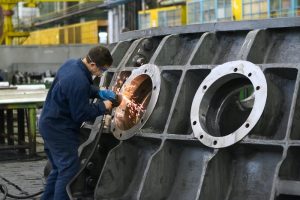Over the past few decades, American manufacturing has experienced a significant decline, with many factories shutting down and jobs moving overseas; however, recent data suggest that this trend may be reversing, with a resurgence in American manufacturing and an increase in factory jobs.
According to the United States Bureau of Labor Statistics (BLS), the U.S. has added more than 700,000 manufacturing jobs since the end of the Great Recession in 2009. This growth has been driven by a combination of factors, including rising demand for American-made products, advances in automation technology, and government policies to incentivize companies to keep jobs in the U.S.
One of the key drivers of this manufacturing resurgence is the growing demand domestically and abroad for American-made products. As consumers become more conscious of the environmental and ethical implications of their purchasing decisions, they are increasingly turning to products that are made locally and sustainably. This trend has been especially evident in the food and beverage industry, where consumers are willing to pay a premium for products made using locally sourced ingredients and produced in small batches.
Another factor contributing to the growth of American manufacturing is the adoption of advanced automation technologies. While there are mounting concerns about the potential impact of automation on jobs, many manufacturers are finding that these technologies can actually enhance their productivity and competitiveness, allowing them to create more jobs in the long run.
Additionally, government policies aimed at incentivizing companies to keep jobs in the U.S. have also played a role in the resurgence of American manufacturing. Notably, the Tax Cuts and Jobs Act of 2017 provided tax incentives for companies that invest in domestic manufacturing, while the Buy American Act requires federal agencies to prioritize American-made products in their procurement decisions.
Despite these positive trends, American manufacturers still face challenges, particularly in the form of competition from overseas. To remain competitive, American manufacturers will need to continue to innovate and invest in new technologies while also ensuring that they are producing high-quality products that meet the needs of consumers.




















